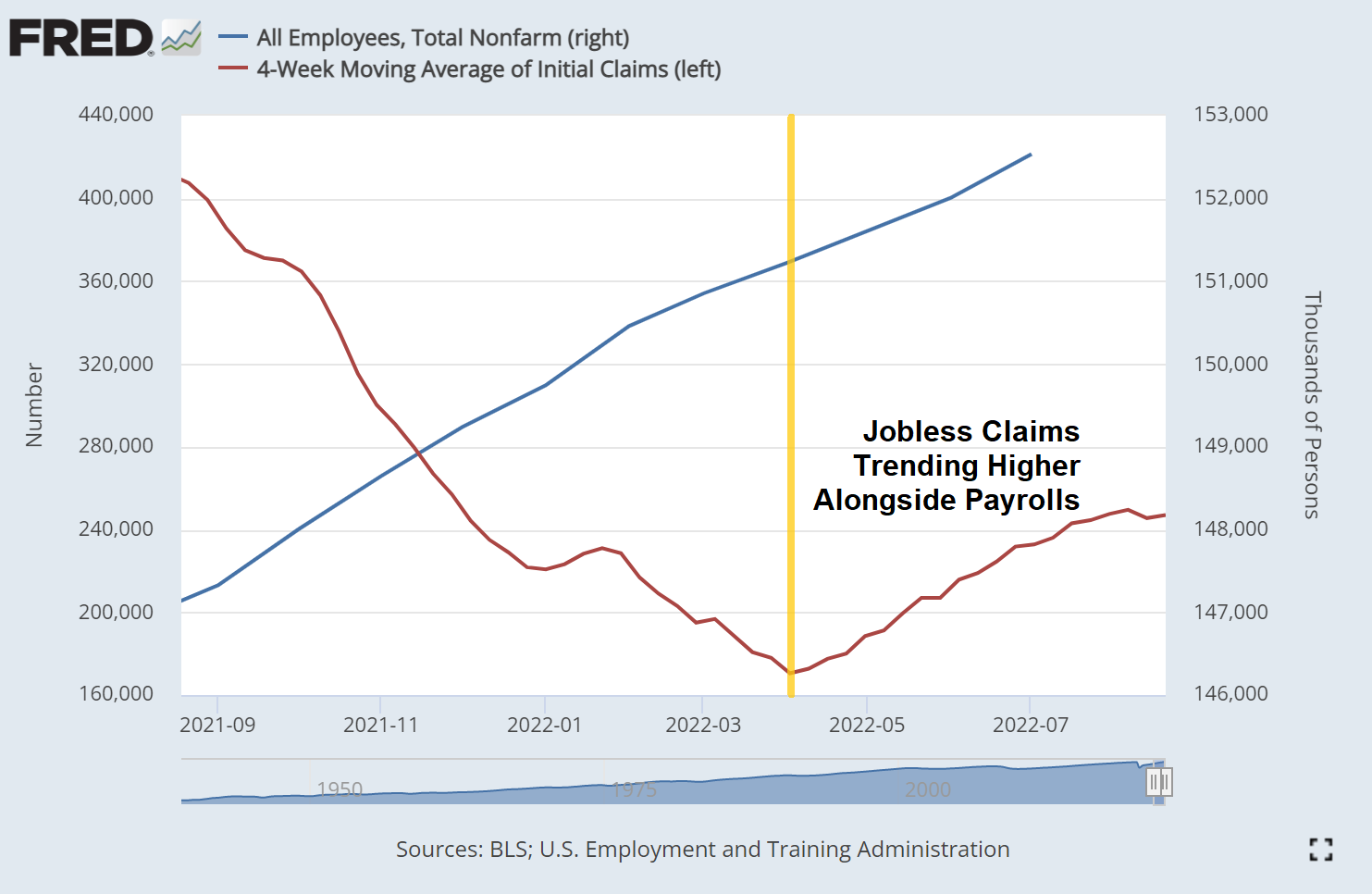Stocks jumped higher today following better-than-expected weekly jobless claims. The Dow, S&P, and Nasdaq Composite all rose through noon as tech shares led the way.
Initial jobless claims fell to 243,000 last week, down from 245,000 in the week prior. First-time filings came in well below the estimate of 255,000. Instead of slumping, though, stocks rallied, bucking the “good news is bad news” narrative.
“Initial jobless claims will gradually rise as economic growth slows and businesses focus on trimming inefficiencies in a shakier fundamental backdrop,” said top US economist Oren Klatchin of Oxford Economics in a note to clients.
“However, persistently scant labor supply will prevent a spike in jobless claims as employers will be concerned about how long it might take to fill open positions.”

Despite the jobless claims “beat,” the 4-week moving average of initial claims ticked higher, continuing the odd trend in which jobless claims have risen alongside payrolls.
We observed that a disconnect formed between the establishment surveys (which provide the headline jobs figure in each monthly jobs report) and the household surveys (from which the unemployment rate is derived in each monthly jobs report) going back to March of this year.
That’s around the same time the 4-week moving average of initial claims started to climb in tandem with payrolls.
Either someone is lying or the data reported isn’t being analyzed correctly (maybe a little of both). The last few jobs reports showed that the number of Americans holding multiple full-time jobs soared this year. That explained the disparity between the household and establishment surveys.
The odd relationship between initial claims and payrolls, on the other hand, is more puzzling. And it provides yet another reason to look at the “strong” labor market with a healthy dose of skepticism.
We ask the same question every time jobs data comes out, but it bears repeating:
Would a strong economy and labor market force Americans to take on multiple full-time jobs at a near-record pace?
GDP revisions were also released this morning, revealing that Q2 GDP contracted by 0.6% instead of the initially reported 0.9% contraction. The price index was revised, too, as prices grew by 8.4% last quarter vs. 8.2% initially reported. Real GDP income, meanwhile, rose by 1.4% in Q2.
All of this could have been interpreted as bearish since it’s indicative of a stronger-than-expected economy, which might prompt the Fed to shift hawkish in September.
Stocks rallied strongly at the open nonetheless. Through noon, though, the indexes gave up most of their early gains as investors anxiously awaited Fed Chairman Jerome Powell’s remarks on the economy, due out tomorrow at 10 am EST.
“The market is trying to decide if we are mid-cycle or late cycle and sending a couple [of] different signals,” said SoFi’s Liz Young.
“We’re waiting to get news of what happens tomorrow in Jerome Powell’s speech and kind of stuck without a whole ton of direction.”
In other words, expect a quiet finish to today’s trading session followed by fireworks tomorrow morning. And, unless Powell talks about backing off hikes significantly, stocks should plummet – not surge – in response to his comments.








